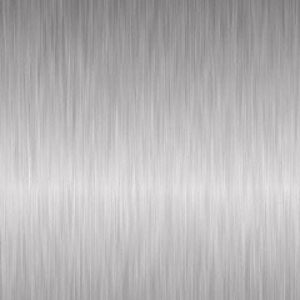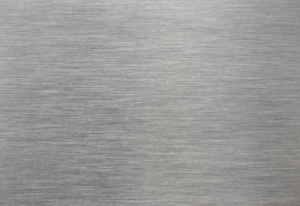Introduction
Structural steel finishing is a technique of surface treatment that changes the qualities of steel structures. There are many different types of finishing techniques that serve a variety of functional and aesthetic purposes. Finishing is a crucial phase in the fabrication process as this is the final step in preparing metal items for usage. Finishing improves corrosion resistance, adds a layer of durability, and improves the appearance of surfaces. Electrical, chemical, and tarnish resistance are all improved by finishing.
The hard structural steel fabrication work you’ve done will be undermined if the steel finishing isn’t done correctly. Furthermore, a lack of attention to detail in steel finishing could lead to corrosion and damage down the road. This could result in a considerable reduction in the lifespan of your items.
These are just a few of the reasons for the structural steel finishing, and selecting the best finish for a particular structure or product necessitates a thorough understanding of the various processes and the conditions and costs involved. It’s always best to seek an expert opinion to determine which finish suits your specific application.
Which are the types of structural steel finishes?
Some of the structural steel finishes that several companies or individuals are adopting are listed as follows.
Galvanized Steel Finish
One of the most prevalent methods of steel finishing for protecting steelwork against corrosion is galvanizing. It works by applying a thin layer of zinc to a thicker base metal. This acts as a barrier between it and the outer surroundings. When the zinc cools, it combines with the steel to generate zinc carbonate, which protects by keeping the base metal from coming into touch with the air. Because of its higher electronegativity, zinc will corrode faster than the steel which it is shielding.
The structural steel of a pre-engineered steel building might be galvanized for many reasons. Unlike painting, where portions can be overlooked or unevenly applied, the dipping method assures that the entire component is coated. Galvanizing has a higher initial cost than specific painting solutions. At the same time, it may be the less expensive option depending upon the building condition and the amount of work involved. It is less expensive in the long run because it does not require maintenance and has a longer life duration.
Polyester powder coating (PPC) Structural Steel Finish
Powder coating is the method of giving a steel structure color. The finish protects against corrosion and adds color to the project site, allowing it to blend in or stand out from other finishes. The steel is cleaned properly to remove any filth before being sprayed with a hot metal spray. After that, the steel is powder coated with an electrostatic charge and hardened in an oven to complete the process. After galvanizing, this method is effective in preventing corrosion and is the most long-lasting technology known.
Mill Structural Steel Finish
The surface finish of metal as it exits a rolling mill, extrusion die, or drawing process, such as sheet, bar, plate, or structural forms, is called mill finish. This finish is typically gritty and lacks luster, with areas of oxidation or mill oil contamination. It has the appearance of a hazy mirror with some reflection and visible production lines. A final light roll pass of the sheet through polished rolls as it produces.
Primer Structural Steel Finish
Primer paint applied on structural steel improves paint adhesion to the surface, extends the life of the paint, and provides additional protection for the steelwork. It’s usually used before painting with other colors. It includes applying paint with a high zinc phosphate content, which is an active corrosion-resistant substance. The paint’s ingredient reacts with water and inhibits anodes from developing on the steel’s surface. The number of primer applications required depends on the steel, where it will be put, and if it will be exposed to oxygen and water frequently. The environmental friendliness of priming paint on steel is one of its benefits. Since their debut, steel primer finishing techniques have been progressively improved to increase durability while maintaining a high level of environmental protection.

Source: Steelandsite.com
Polished Structural Steel Finish
A polished finish on stainless steel comes in various styles. Many architects prefer the reflected appearance of a mirror or even a brilliant annealed finish. Consumers will appreciate the appearance of the structures because they shine in the light and appear clean and shiny. Polished finishes are fantastic for interior designs and storefronts because they shine in the light and look clean and reflective.
Brushed Structural Steel Finish
The brushed structural steel finish is similar to the polished structural steel finish. A light abrasion is used to finish them. With a brushed finish, a hint of gentle silver-gray can be seen beneath the surface. It has a vintage style, and it will go with any structure that doesn’t have a lot of vivid colors. It might dull the steel’s color a little, and many designers prefer the brushed effect because it doesn’t reflect light as much as mirror-polished finishes.

Source: Global Sources
Blasted And Pickled Structural Steel Finish
To achieve this finish, it is required to mechanically remove any contamination from the stainless forms before dipping them in a passivation tank to remove any pollutants chemically. This finish has a matte appearance and a very clean appearance. When searching for an industrial style, the blasted and pickled treatment works nicely. This finish is popular among architects because it conceals any imperfections or fingerprints that are frequent in storefronts and exposed structures. This finish is extremely popular for naval projects or any project exposed to a lot of harsh weather and wind.
Conclusion
One of the most important considerations for architects and designers when envisioning a finished project is its aesthetic. Structural steel is a popular design choice because of the various treatments available on it. There is a finish for every project, and the one you choose will complete a stunning edifice. When selecting a finish, one should keep in mind whether the procedure is optimal for the product’s intended use, whether the method can be produced at the rate you require, whether the process of completing is cost-effective, and whether the finishing procedure is appropriate for the materials used in the project. All these will play an important role in proving a project economical, aesthetic, and durable.
References
- Stainless Structurals, “Common Finishes of Stainless Steel”
- Fordingbridge, “Steel frame finish options”
- JDG Construction, “Structural Steel Finishes”
- A13 Steel, “Steel Finishes”
- Baker Steel Trading Ltd., “Steel Finishing”
- West Australian Steel Sales, “HOW TO CHOOSE THE RIGHT FINISH FOR YOUR STEELWORK”
- Swanton Welding Company, “The Various Types of Finishing Options for Your Fabrication Project”
If you read something you liked on our website, or we helped you with an issue, consider buying us a coffee!








